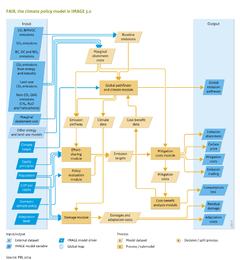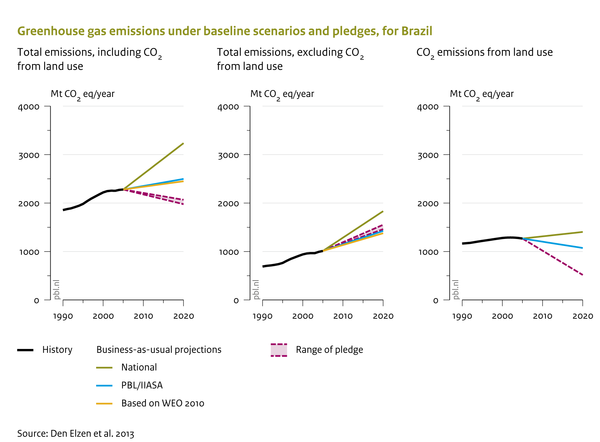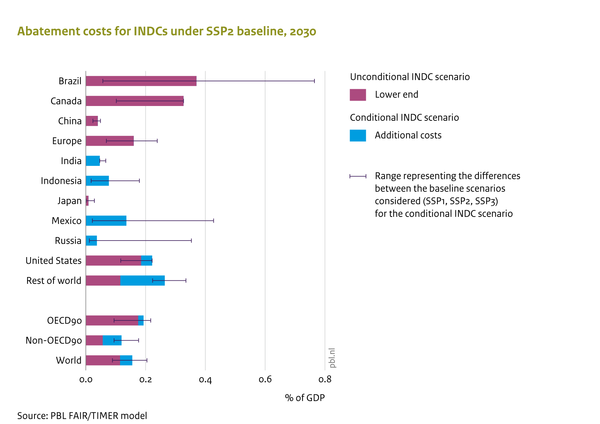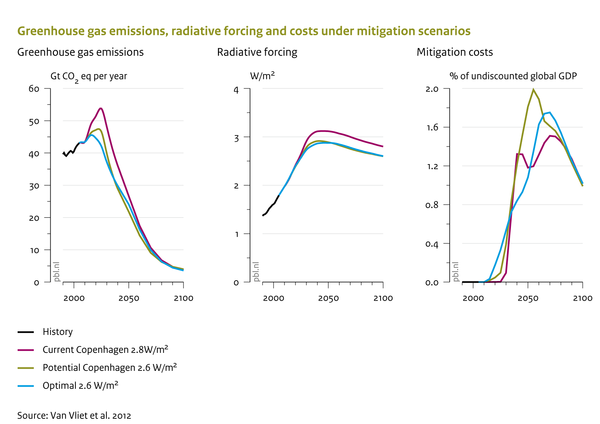Climate policy/Policy issues: Difference between revisions
Oostenrijr (talk | contribs) m (Text replacement - "et al. 2" to "et al., 2") |
Oostenrijr (talk | contribs) No edit summary |
||
| Line 1: | Line 1: | ||
{{ComponentPolicyIssueTemplate | {{ComponentPolicyIssueTemplate | ||
|Reference=Den Elzen et al., 2007; Den Elzen and van Vuuren, 2007; Van Vuuren et al., 2011a; Van Vuuren et al., 2012; European Commission, 2010; Den Elzen et al., 2012b; Den Elzen et al., 2011b; UNEP, 2012; Hof et al., 2013; Höhne et al., 2012; Roelfsema et al., 2013; Roelfsema et al., 2014; Den Elzen and Höhne, 2010; Den Elzen et al., 2012a; Hof et al., 2012; Mendoza Beltrán et al., 2011; Hof et al., 2011; Hof et al., 2008; Hof et al., 2010; Den Elzen et al., 2012c; Van Vliet et al., 2012; Admiraal et al., 2016; Van den Berg et al., 2015; Harmsen et al. (2016); UNEP (2016); Rogelj et al., 2016; Den Elzen et al., 2015a; Kuramochi et al., 2016; Hof et al., 2016; | |Reference=Den Elzen et al., 2007; Den Elzen and van Vuuren, 2007; Van Vuuren et al., 2011a; Van Vuuren et al., 2012; European Commission, 2010; Den Elzen et al., 2012b; Den Elzen et al., 2011b; UNEP, 2012; Hof et al., 2013; Höhne et al., 2012; Roelfsema et al., 2013; Roelfsema et al., 2014; Den Elzen and Höhne, 2010; Den Elzen et al., 2012a; Hof et al., 2012; Mendoza Beltrán et al., 2011; Hof et al., 2011; Hof et al., 2008; Hof et al., 2010; Den Elzen et al., 2012c; Van Vliet et al., 2012; Admiraal et al., 2016; Van den Berg et al., 2015; Harmsen et al. (2016); UNEP (2016); Rogelj et al., 2016; Den Elzen et al., 2015a; Kuramochi et al., 2016; Hof et al., 2016; | ||
}} | |||
<div class="page_standard"> | |||
==Baseline developments== | |||
[[FAIR model|FAIR]] can be used to analyse baseline developments, such as expected climate change damage. However, more often baseline developments are explored using the larger IMAGE framework, and the FAIR model receives this information as input for policy analysis. | |||
As part of the IMAGE framework, FAIR can be used to evaluate a range of policies and strategies, including: | As part of the IMAGE framework, FAIR can be used to evaluate a range of policies and strategies, including: | ||
*Long-term mitigation strategies such as emission reductions over time ([[Den Elzen et al., 2007]]; [[Den Elzen and van Vuuren, 2007]]; [[Van Vliet et al., 2009]]; [[Van Vuuren et al., 2011b]]; [[Van Vuuren et al., 2012|2012]]); | * Long-term mitigation strategies such as emission reductions over time ([[Den Elzen et al., 2007]]; [[Den Elzen and van Vuuren, 2007]]; [[Van Vliet et al., 2009]]; [[Van Vuuren et al., 2011b]]; [[Van Vuuren et al., 2012|2012]]); | ||
* Evaluation of current reduction proposals by countries and policy options until 2030 ([[Den Elzen et al., 2011a]]; [[Den Elzen et al., 2011b|2011b]]; [[Den Elzen et al., 2012b|2012b]]; [[Hof et al., 2013]]; [[UNEP (2016)]]; [[Den Elzen et al., 2016]]); | |||
*Evaluation of | * Evaluation of domestic climate and energy policies for the next 10 to 20 years ([[Höhne et al., 2012]]; [[Roelfsema et al., 2013]]; [[Roelfsema et al., 2014|2014]]; [[Den Elzen et al., 2015a]]; [[Kuramochi et al., 2016]]); | ||
*Evaluation of | * Evaluation of burden sharing or effort sharing regimes ([[Den Elzen and Höhne, 2010]]; [[Den Elzen et al., 2012a]]; [[Hof et al., 2012]]; [[Hof et al., 2016]]); | ||
* | * Analysis of regional abatement costs and emission trading ([[Den Elzen et al., 2008]]; [[Den Elzen et al., 2011a]]; [[Mendoza Beltrán et al., 2011]]); | ||
* Evaluation of proposals for financing climate policies ([[Hof et al., 2009]]; [[Hof et al., 2011|2011]]); | |||
*Evaluation of proposals for financing climate policies ([[Hof et al., 2009]]; [[Hof et al., 2011|2011]]); | |||
* Evaluation of trade-offs between mitigation costs, adaptation costs and the benefits of reduced climate damage ([[Hof et al., 2008]]; [[Hof et al., 2009|2009]]; [[Hof et al., 2010|2010]]); [[Admiraal et al., 2016]]); | * Evaluation of trade-offs between mitigation costs, adaptation costs and the benefits of reduced climate damage ([[Hof et al., 2008]]; [[Hof et al., 2009|2009]]; [[Hof et al., 2010|2010]]); [[Admiraal et al., 2016]]); | ||
* Assessment of the policy costs, emission profiles and climate effects resulting from the use of different climate metrics such as the {{abbrTemplate|GWP}} ([[Van den Berg et al., 2015]]; [[Harmsen et al. (2016)]]); | * Assessment of the policy costs, emission profiles and climate effects resulting from the use of different climate metrics such as the {{abbrTemplate|GWP}} ([[Van den Berg et al., 2015]]; [[Harmsen et al. (2016)]]); | ||
The FAIR Policy Evaluation module has been used in determining emission reductions resulting from pledges made for 2020 ([[Den Elzen et al., 2012c]]). In 2011, Brazil presented a new, higher estimate for national business-as-usual ({{abbrTemplate|BAU}}) emissions, against which a 36 to 39% reduction pledge was made. The total pledge for all greenhouse gas emissions including emissions from deforestation was a reduction of 20 to 24% compared to the PBL/IIASA BAU emission projections. This reduction is substantially lower than pledged by Brazil from national {{abbrTemplate|BAU}} projections . | The FAIR Policy Evaluation module has been used in determining emission reductions resulting from pledges made for 2020 ([[Den Elzen et al., 2012c]]). In 2011, Brazil presented a new, higher estimate for national business-as-usual ({{abbrTemplate|BAU}}) emissions, against which a 36 to 39% reduction pledge was made. The total pledge for all greenhouse gas emissions including emissions from deforestation was a reduction of 20 to 24% compared to the PBL/IIASA BAU emission projections. This reduction is substantially lower than pledged by Brazil from national {{abbrTemplate|BAU}} projections . | ||
As shown in the figure below, all reductions result from reduced emissions from deforestation (REDD). The contributions from {{abbrTemplate|REDD}} projects (about 560 MtCO2) are expected to exceed or match the required total reduction in all greenhouse gas emissions of 470 and 570 Mt CO2eq for the 36% and 39% reduction pledge scenarios. | As shown in the figure below, all reductions result from reduced emissions from deforestation (REDD). The contributions from {{abbrTemplate|REDD}} projects (about 560 MtCO2) are expected to exceed or match the required total reduction in all greenhouse gas emissions of 470 and 570 Mt CO2eq for the 36% and 39% reduction pledge scenarios. | ||
| | |||
{{DisplayPolicyInterventionFigureTemplate|{{#titleparts: {{PAGENAME}}|1}}|Baseline figure}} | |||
==Policy interventions== | |||
The Global Pathfinder module FAIR-SiMCaP was used to determine what the pledges for 2020 and the {{abbrTemplate|INDC}} targets (mainly for 2030) imply for global emission pathways consistent with meeting the 2 °C target ([[Van Vliet et al., 2012]], [[UNEP (2016)]], [[Den Elzen et al., 2016]];). The main findings were as follows (see also the figure below): | The Global Pathfinder module FAIR-SiMCaP was used to determine what the pledges for 2020 and the {{abbrTemplate|INDC}} targets (mainly for 2030) imply for global emission pathways consistent with meeting the 2 °C target ([[Van Vliet et al., 2012]], [[UNEP (2016)]], [[Den Elzen et al., 2016]];). The main findings were as follows (see also the figure below): | ||
| Line 37: | Line 36: | ||
*Despite the reductions from the {{abbrTemplate|INDC}}s, the global and G20 emission level is still projected to be higher in 2030 than it was in 2010. | *Despite the reductions from the {{abbrTemplate|INDC}}s, the global and G20 emission level is still projected to be higher in 2030 than it was in 2010. | ||
*The 2030 emissions are expected to reach 54 to 56 gigatonnes of carbon dioxide equivalent – far above the level of 42 needed to have a chance of limiting global warming to 2 degrees Celsius this century. | *The 2030 emissions are expected to reach 54 to 56 gigatonnes of carbon dioxide equivalent – far above the level of 42 needed to have a chance of limiting global warming to 2 degrees Celsius this century. | ||
* For an even longer delay (the current Copenhagen scenario), the FAIR-SiMCaP model cannot fully compensate the higher emission level in the short term; | * For an even longer delay (the current Copenhagen scenario), the FAIR-SiMCaP model cannot fully compensate the higher emission level in the short term; | ||
* A delay in emission reductions limits the flexibility in the portfolio of emission reduction options. Such delayed scenarios rely more on the use of bioenergy with carbon capture and storage ({{abbrTemplate|BECCS}}), an option with uncertain prospects for large-scale implementation. | * A delay in emission reductions limits the flexibility in the portfolio of emission reduction options. Such delayed scenarios rely more on the use of bioenergy with carbon capture and storage ({{abbrTemplate|BECCS}}), an option with uncertain prospects for large-scale implementation. | ||
}} | |||
{{DisplayPolicyInterventionFigureTemplate|{{#titleparts: {{PAGENAME}}|1}}|Policy intervention figure}} | |||
{{PIEffectOnComponentTemplate }} | |||
</div> | |||
Revision as of 15:05, 15 November 2018
Parts of Climate policy/Policy issues
Baseline developments
FAIR can be used to analyse baseline developments, such as expected climate change damage. However, more often baseline developments are explored using the larger IMAGE framework, and the FAIR model receives this information as input for policy analysis.
As part of the IMAGE framework, FAIR can be used to evaluate a range of policies and strategies, including:
- Long-term mitigation strategies such as emission reductions over time (Den Elzen et al., 2007; Den Elzen and van Vuuren, 2007; Van Vliet et al., 2009; Van Vuuren et al., 2011b; 2012);
- Evaluation of current reduction proposals by countries and policy options until 2030 (Den Elzen et al., 2011a; 2011b; 2012b; Hof et al., 2013; UNEP (2016); Den Elzen et al., 2016);
- Evaluation of domestic climate and energy policies for the next 10 to 20 years (Höhne et al., 2012; Roelfsema et al., 2013; 2014; Den Elzen et al., 2015a; Kuramochi et al., 2016);
- Evaluation of burden sharing or effort sharing regimes (Den Elzen and Höhne, 2010; Den Elzen et al., 2012a; Hof et al., 2012; Hof et al., 2016);
- Analysis of regional abatement costs and emission trading (Den Elzen et al., 2008; Den Elzen et al., 2011a; Mendoza Beltrán et al., 2011);
- Evaluation of proposals for financing climate policies (Hof et al., 2009; 2011);
- Evaluation of trade-offs between mitigation costs, adaptation costs and the benefits of reduced climate damage (Hof et al., 2008; 2009; 2010); Admiraal et al., 2016);
- Assessment of the policy costs, emission profiles and climate effects resulting from the use of different climate metrics such as the GWP (Van den Berg et al., 2015; Harmsen et al. (2016));
The FAIR Policy Evaluation module has been used in determining emission reductions resulting from pledges made for 2020 (Den Elzen et al., 2012c). In 2011, Brazil presented a new, higher estimate for national business-as-usual (BAU) emissions, against which a 36 to 39% reduction pledge was made. The total pledge for all greenhouse gas emissions including emissions from deforestation was a reduction of 20 to 24% compared to the PBL/IIASA BAU emission projections. This reduction is substantially lower than pledged by Brazil from national BAU projections .
As shown in the figure below, all reductions result from reduced emissions from deforestation (REDD). The contributions from REDD projects (about 560 MtCO2) are expected to exceed or match the required total reduction in all greenhouse gas emissions of 470 and 570 Mt CO2eq for the 36% and 39% reduction pledge scenarios.
Policy interventions
The Global Pathfinder module FAIR-SiMCaP was used to determine what the pledges for 2020 and the INDC targets (mainly for 2030) imply for global emission pathways consistent with meeting the 2 °C target (Van Vliet et al., 2012, UNEP (2016), Den Elzen et al., 2016;). The main findings were as follows (see also the figure below):
- The global 2020 emission level resulting from implementation of the Copenhagen Accord pledges exceeds those of least-cost pathways that achieve a 2 °C target;
- Slightly postponing mitigation action compared to the least-cost scenario seems technically feasible but at higher cumulative discounted mitigation costs;
- Despite the reductions from the INDCs, the global and G20 emission level is still projected to be higher in 2030 than it was in 2010.
- The 2030 emissions are expected to reach 54 to 56 gigatonnes of carbon dioxide equivalent – far above the level of 42 needed to have a chance of limiting global warming to 2 degrees Celsius this century.
- For an even longer delay (the current Copenhagen scenario), the FAIR-SiMCaP model cannot fully compensate the higher emission level in the short term;
- A delay in emission reductions limits the flexibility in the portfolio of emission reduction options. Such delayed scenarios rely more on the use of bioenergy with carbon capture and storage (BECCS), an option with uncertain prospects for large-scale implementation.
Effects of policy interventions on this component
| Policy intervention | Description | Effect |
|---|---|---|
| Carbon tax (*) | A tax on carbon leads to higher prices for carbon intensive fuels (such as fossil fuels), making low-carbon alternatives more attractive. | In the climate policy component, the carbon tax leads to emission reductions via Marginal Abatement Cost (MAC) curves derived from the TIMER model. |
| Climate change adaptation (*) | Adaptation to climate change reduces climate damage. The model can optimally calculate the optimal adaptation level based on marginal adaptation costs and marginal avoided damage, but an alternative adaptation level can be used as well. (Reference:: Hof et al., 2009, Hof et al., 2010) | More adaptation increases adaptation costs, but reduces the damage resulting from climate change. (Reference:: De Bruin et al., 2009) |
| Effort- or burden-sharing of emission reductions (*) | Evaluation of burden-sharing or effort-sharing regimes. Which regions or countries should contribute, when and by how much to reduce global greenhouse gas emissions? (Reference:: Hof et al., 2012, Den Elzen et al., 2012b, Den Elzen and Höhne, 2010) | The burden-sharing regime affects regional mitigation costs, as different burden-sharing rules lead to different emission reduction targets. |
| Emission trading policy (*) | Analysis of the effect of rules for trading emission credits on regional abatement costs. (Reference:: Den Elzen et al., 2011a, Den Elzen et al., 2008, Mendoza Beltrán et al., 2011) | Different rules for trading emission credits lead to different regional mitigation costs. Without any restrictions on emission trading, emission reductions take place wherever it is cheapest to do so and the differences between regional targets and actual domestic emissions is traded among regions. |
| Financing climate policy (*) | Developed countries could provide financial resources to assist developing countries by implementation of mitigation and adaptation policies. To mobilise these funds, several mechanisms exist, of which the effect can be analysed (Reference:: Hof et al., 2009, Hof et al., 2011) | Implementation of climate financing proposals affect regional mitigation costs, as regions have to contribute to financing. The funds mobilised can be used to finance climate policies of the least developed regions. |
| Reduction proposals (pledges) (*) | Evaluation of current reduction proposals by countries and policy options (for the next 10-20 years). (Reference:: UNEP (2016), Den Elzen et al., 2012a, Den Elzen et al., 2011a, Den Elzen et al., 2011b, Hof et al., 2013) | The pledges affect near-term regional emission reductions, thereby influencing mitigation costs. |



